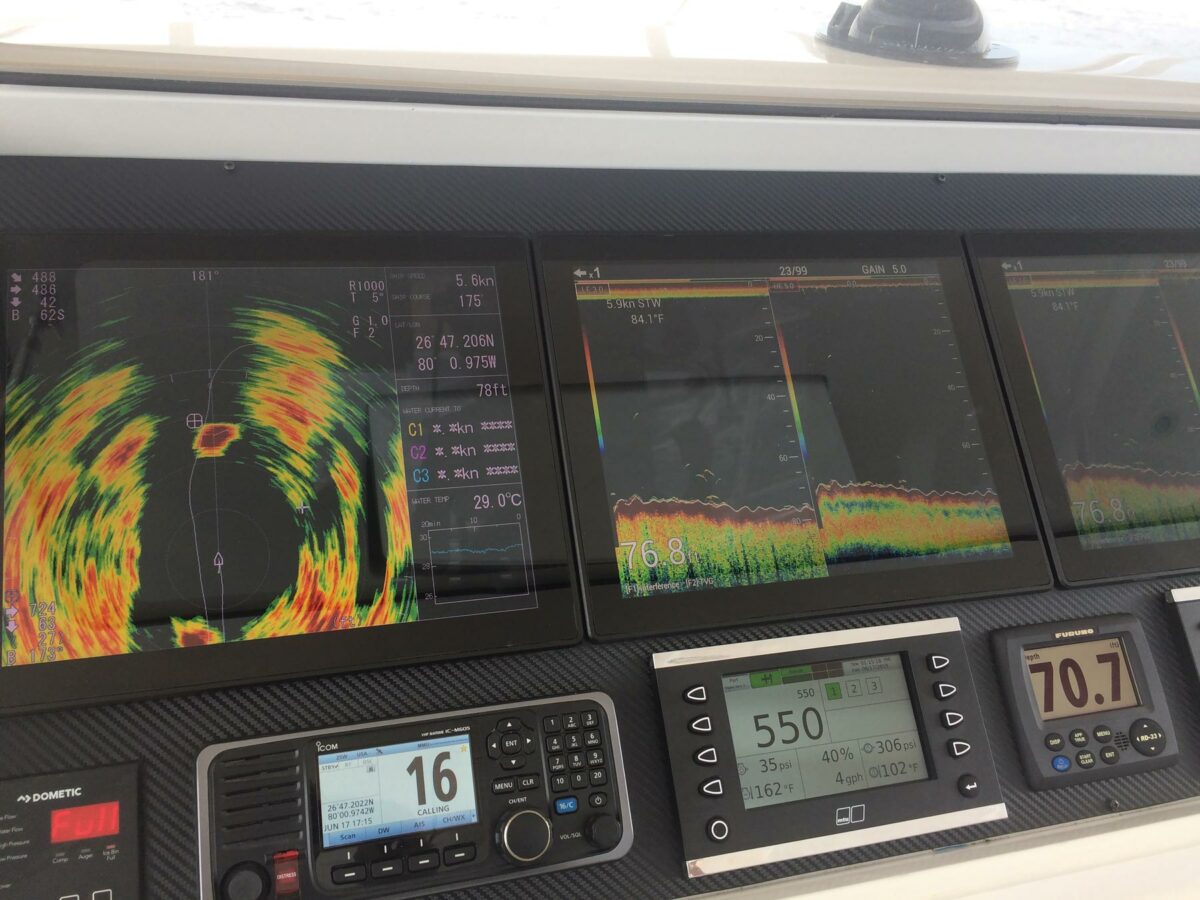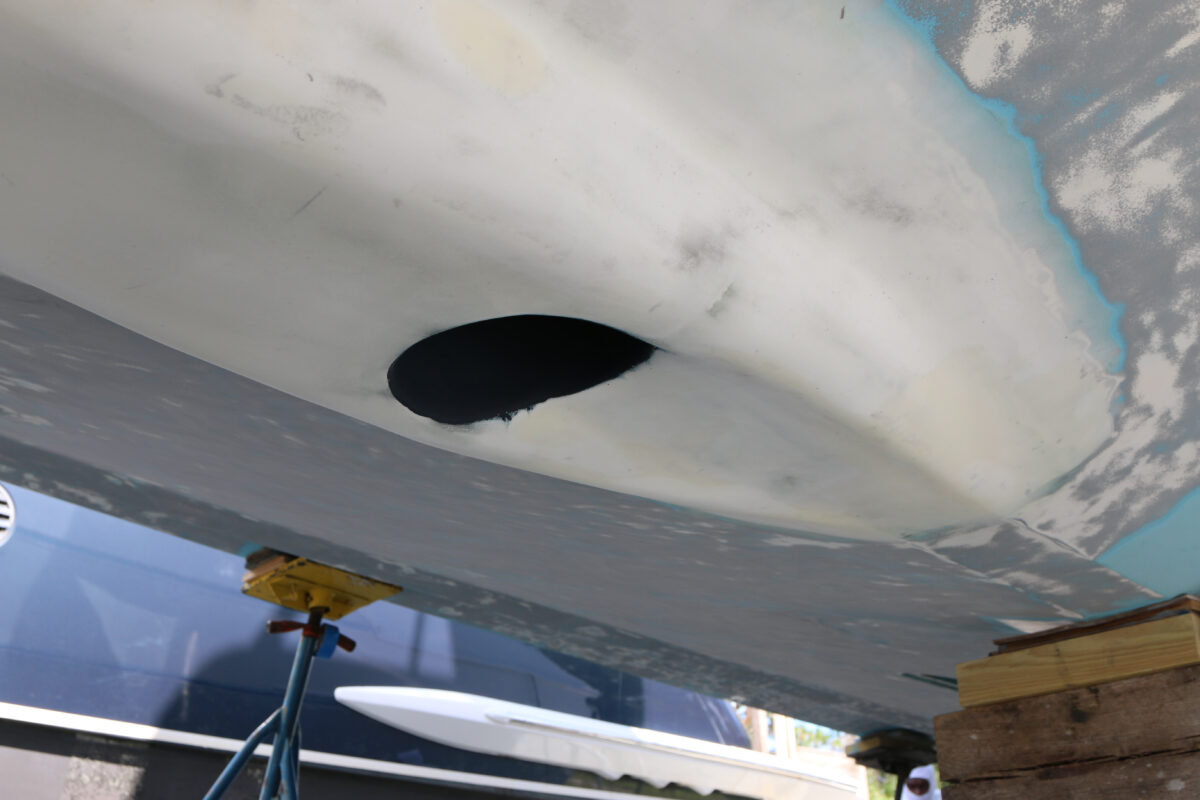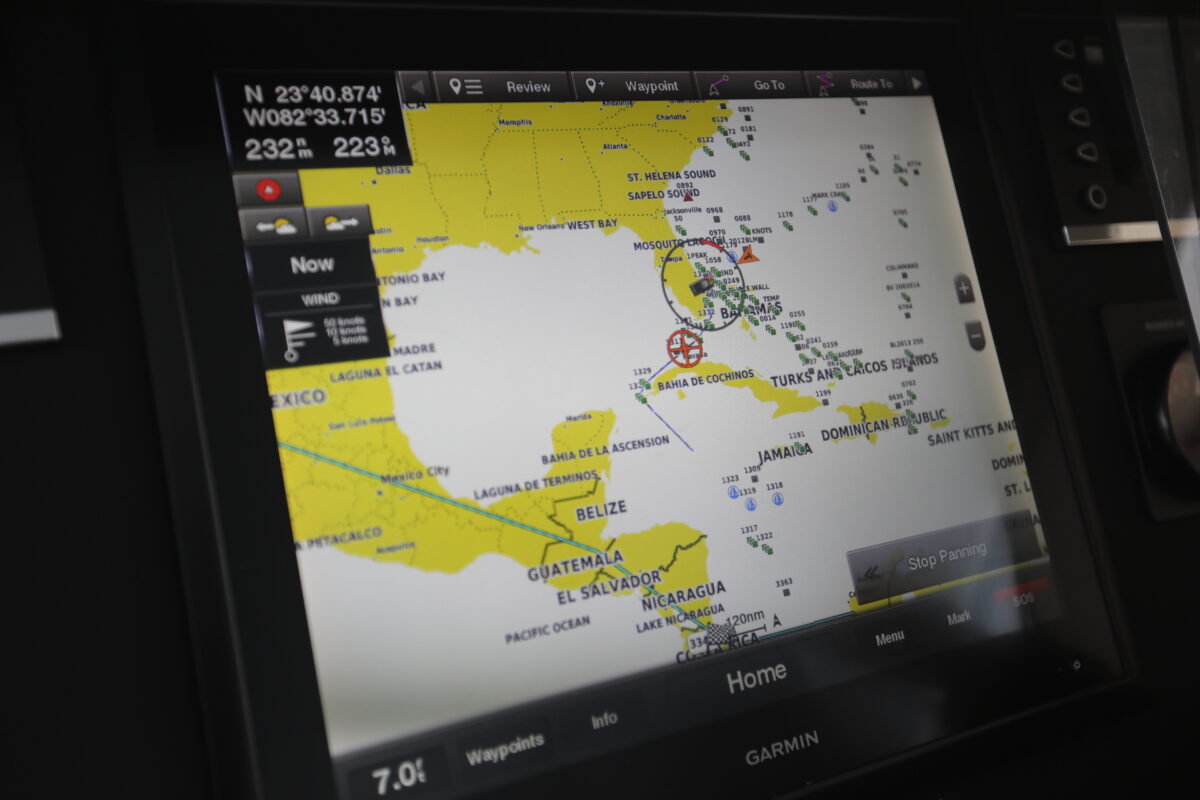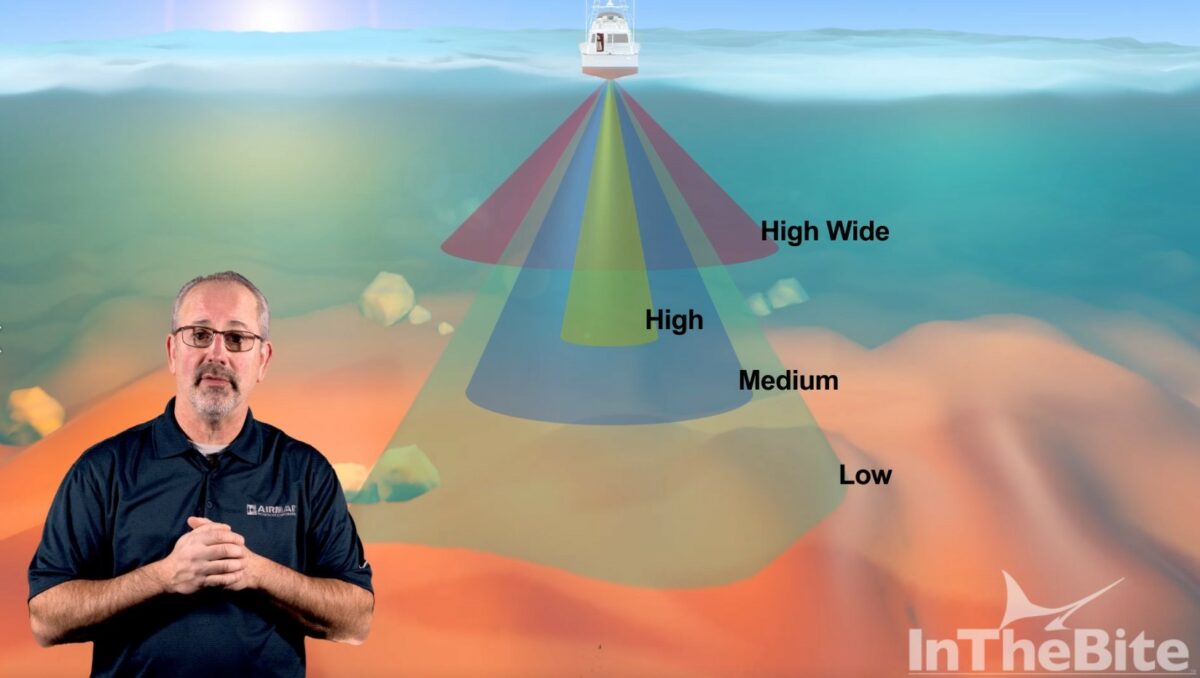There was a time, maybe 10 or 15 years ago, that 50-knot sportfishers, 42-foot center consoles that run 75-knots and can dock themselves, and machines that eliminate seasickness sounded like the stuff of science fiction. As futuristic, and magical, as all of these things may have appeared in 2005, Ill be damned if theyre all not on full display in 2020. In the world of boats, quite a bit of advancement has taken place in a relatively short amount of time.
[% oiopub-banner-24-center %]
In many ways, the boats of today are defined by these rapid technological advances. No longer are vessels comprised of individual components that perform independently of another”each focusing only on its singular role.
These days boats are interconnected systems that communicate with one another. Not only can these systems talk to one another, many of them are linked to satellites and possess the plenty of bandwidth and can display data as clearly as a plasma television.
 Given all of the tools and the incredible amenity included in the package that is the modern boat, it would seem like an act of extreme arrogance to wonder where boats are headed next.
Questions like, How much more could you want? give way to the reality that things will continue to progress and refine. What follows is our best prognostication as to what the next ten years or so holds for the sportfishing and center console market.
To help provide context for this look into the future, we have queried experts across an array of fields.
Given all of the tools and the incredible amenity included in the package that is the modern boat, it would seem like an act of extreme arrogance to wonder where boats are headed next.
Questions like, How much more could you want? give way to the reality that things will continue to progress and refine. What follows is our best prognostication as to what the next ten years or so holds for the sportfishing and center console market.
To help provide context for this look into the future, we have queried experts across an array of fields.

The engine room of the Viking 62 demo boat is a high-tech wonder. How might the scene compare to the boats of 2030? Photo courtesy Viking
Outboard Engines
The large center console market lies in many ways at the cutting edge of modern boating innovation. It is also a segment of the market that is exploding. A large reason for the proliferation of large center console vessels in the past dozen or so years can be found in the advancement of the outboard motor. What you see now, in terms of the proliferation of larger boats was due largely to the horsepower gains in outboard engines. The 350 hp in 2008 was revolutionary”these engines gave boat builders so much more room in the boat, when compared to (inboard) stern drives. Now youre seeing boats that are bigger and bigger and bigger, explains David Meeler New Product Introduction Manager at Yamaha. What were seeing now is generation two of that. The XTO offers a greatly improved charging system that provides lots of amperage at low power. This lends itself to the addiction to electronics that the market is seeing. In the future, well see lots more integration and more connectivity, he says, describing Yamaha latest generation of outboard”the XTO. These higher horsepower engines are even more influential to the development of the center console market than are innovations in the inboard diesel space to the sportfisher segment of the market. As center consoles generally do not include generators (though these days some of them include most anything you can think of), the higher horsepower engines not only propel ever-larger boats, but provide the power necessary to run the many systems that modern boats employ. Innovations in motor design not only focus on power, but on increased production (and efficient allocation) of free amperage”the electricity needed to make everything else run. The XTO puts out the vast majority of its amperage at low rpm. It produces 72 amps per engine” which is multiplied in a multiple engine configuration. Fifty-seven of those amps are produced at idle”which was more than the F350 produced at wide open throttle, Meeler says. The engines employ a magnetic system that converts power produced by the engines. It routes the amount of power needed to the engines and the remainder is sent to applications. The technology today provides the ability to produce a smart system. It no longer just about propulsion, but rather motors are part of the boat”integration, Meeler describes. The positioning and location systems that can dock a boat and keep it in position provide perhaps the most direct reflection of integration and emphasis on system as opposed to singular components. The number of ways to control the engines and the precision to which engines (and their applications) can be used to maneuver the modern boat is nothing short of miraculous. If you believe this definition to be an exaggeration, go ask an old-timer¦you know the man who has been fishing in his two-stroke, tiller-drive john boat for the past 50 years”the guy who shoots more ducks and catches more speckled trout than anyone you know. Take this gentleman onto a boat equipped with Helm Master and put it through its paces”a 360 turn with a joystick and the like”then try to claim it not amazing. There is the joystick for low-speed operation. Then there are the fishing applications: fish point, stay point, and drift point”the feature that can keep the stern positioned into the drift. There are convenience features that are designed to help customers get more out of the boat that theyve just bought, Meeler says. Thinking about it, sometimes reminds me of that old sign I saw in a bait shop sometimes. ˜Remember when your fishfinder was your grandpa?
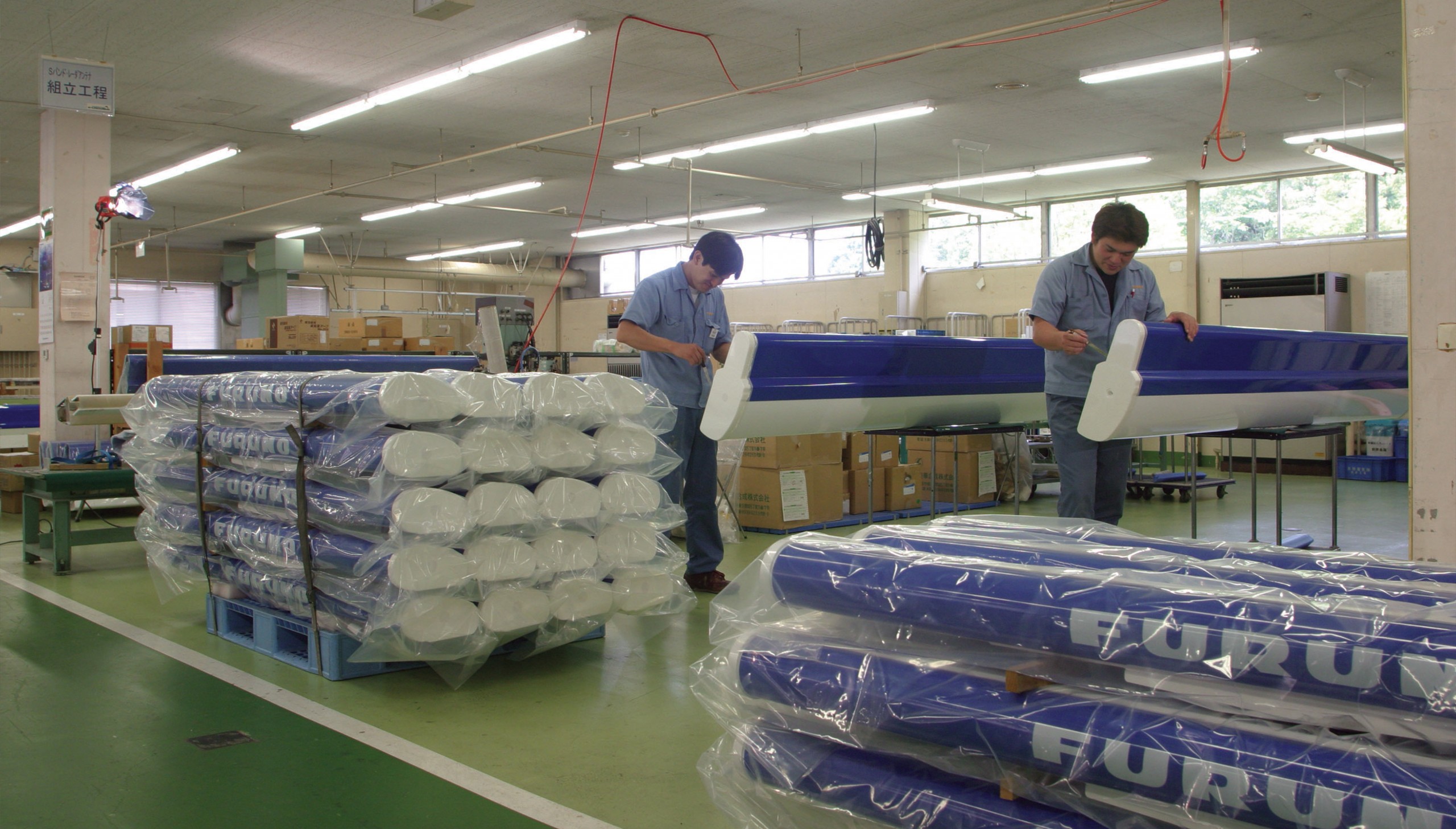
The Furuno Commercial Service Team means business. They are just a few faces behind the magic. Photo courtesy Furuno
The Electronics of the Future
If there were a single piece of the future is here, now technology, there a pretty strong argument that it could be the 8L Omnidirectional sonar from Furuno. This piece of equipment has turned the fishing world on its head by introducing a sonar that scans in 360-degrees every half of a second to provide a nearly real-time representation of what is going on beneath the water. Given that Furuno has a pretty good handle on where things sit now, it stands to reason that Matt Wood, National Sales Manager for Furuno USA might be a pretty good source to speak with about where things are heading next. It 20 years since the introduction of the Furuno NavNet vol. 1. NavNet introduced ethernet networking”a multifunction GPS, chartplotter and fishfinder on the same device. We will continue to see that kind of development”a selection of appropriately large MFDs (multi-function displays), with large screens that are easy to install across an array of boat sizes and styles, Wood says. The black box style processor is still valid. It a lot more straight forward to have a display that doesnt change, but rather to change the black box behind the scenes instead of changing the dash and control mechanisms.
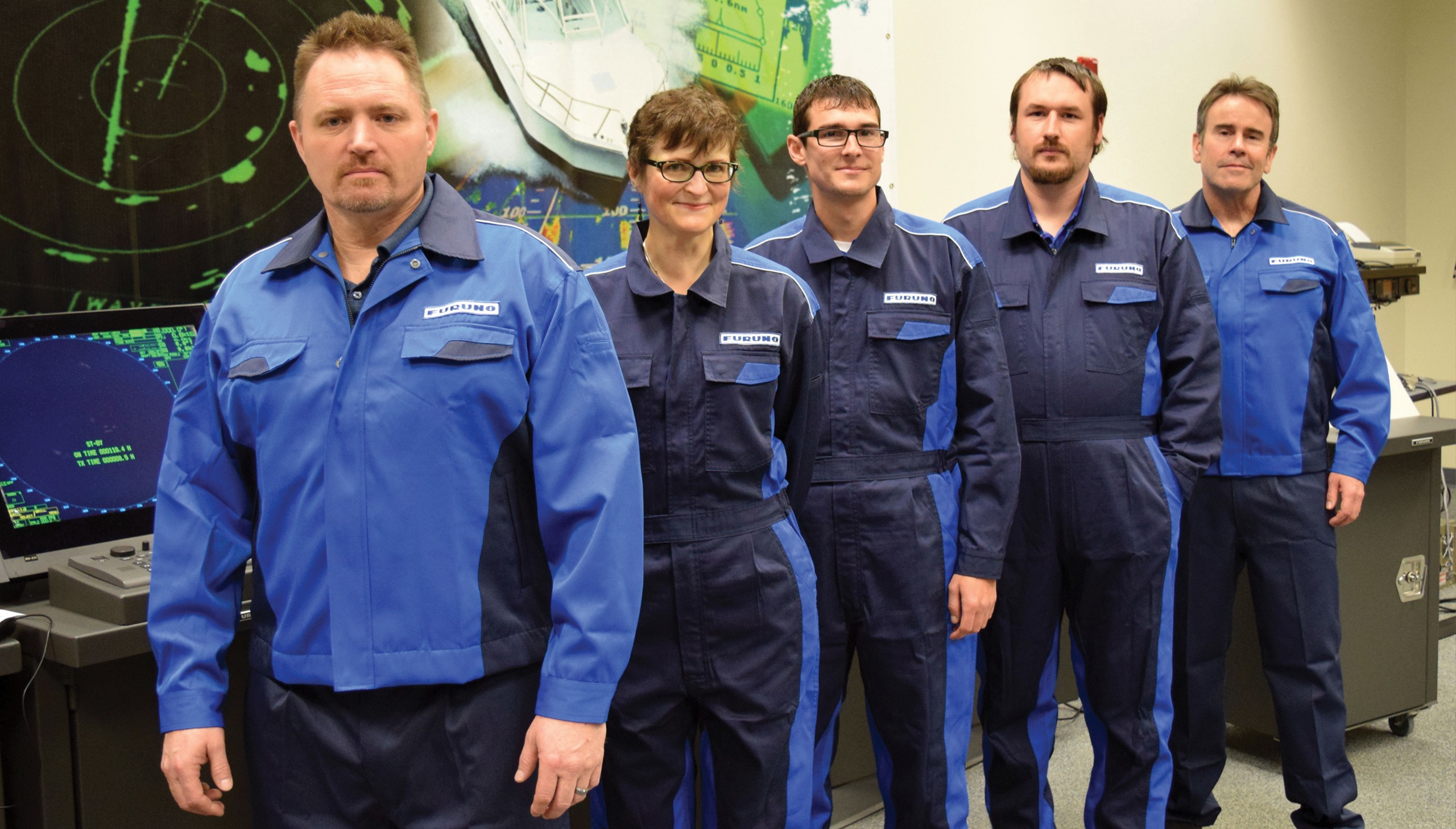
The Furuno Commercial Service Team means business. They are just a few faces behind the magic. Photo courtesy Furuno
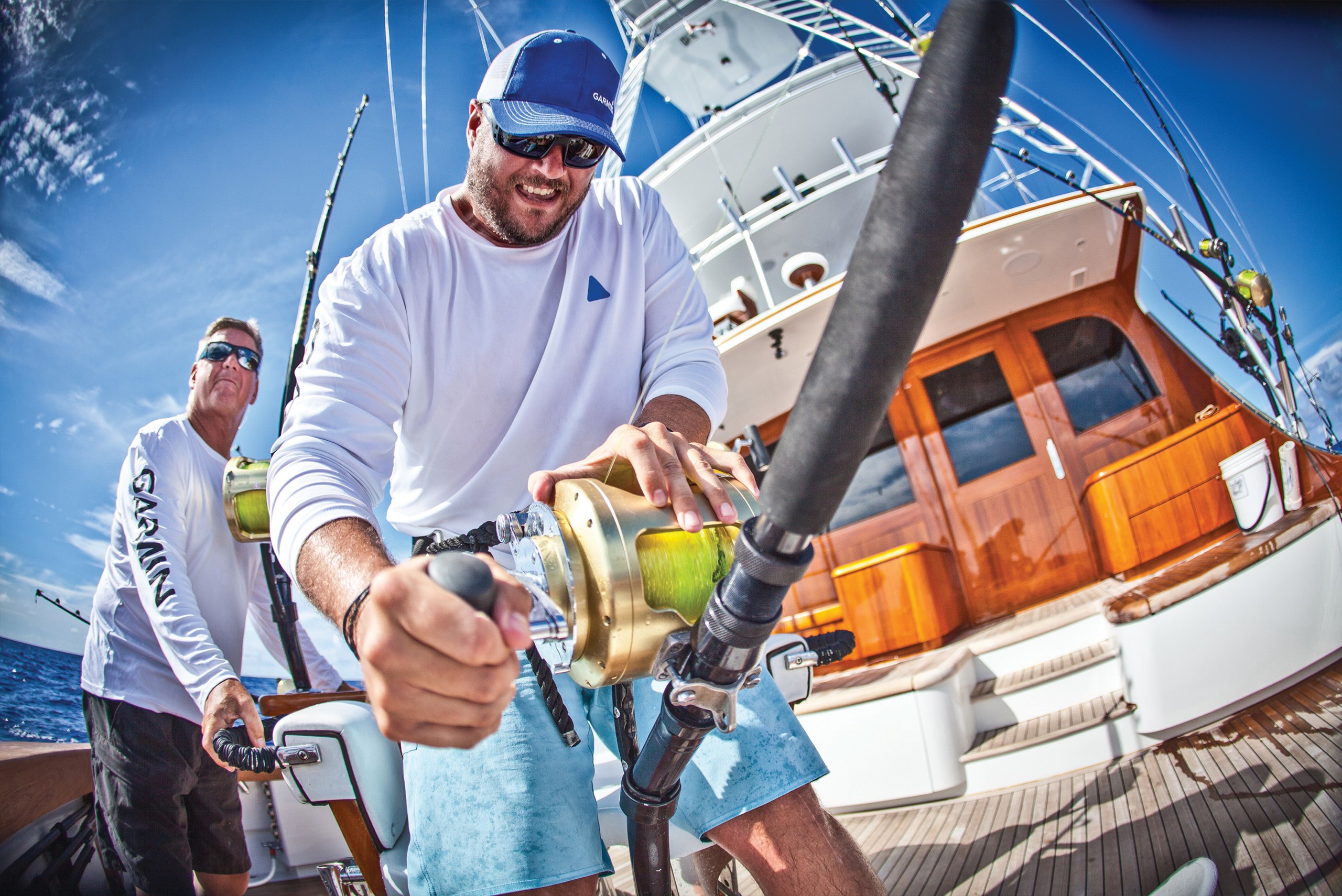
Dave Dunn brings passion for fishing to Garmin outlook and trajectory. Photo courtesy Garmin
Integration and Telematics
Dave Dunn is Garmin Director of Sales and Marketing. He is also a tournament fisherman and a man bitten by the urge to chase billfish. It is this combination, along with an eye for what works on boats, that makes Dave a great resource for projecting the future. Dave introduces a new and exciting word that will likely continue to make boating even more easy and exciting: telematics (remote monitoring and control through phones or other devices). The biggest thing now is the integration of technology. You can soon expect the same integration on a boat as you can with your car and home and phone. This integration makes it possible to use equipment from different companies”control your Lumitech lighting with your Garmin devices, Dunn says. One particularly hot topic that youll see more of in the future is remote monitoring. Telematics will be a big concept”using your phone to remotely monitor the boat. In terms of big picture prognosis, Dunn sees innovation and technology being applied for specific considerations. Our goal will continue to be making it easier for people on the water and to make the boating experience simpler and more robust. Look for the trend of larger screens with multiple functions to continue. The larger and more capable screens are far from solely cosmetic. The past year or so has witnessed incredible increases in cartography and underwater mapping. New MFDs have more processing power and can computer larger amounts of data. This has allowed the use of more high-resolution relief shading. NOAA (the United States National Oceanic and Atmospheric Administration) has vast amounts of data that we can now access. There is a trickle down of technology which all stems from phones, laptops and tablets. Ultimately the technology makes its way to MFDs, Dunn says. Garmin is a large company but were small compared to the Apples and Samsungs of the world. Marine electronics will continue to benefit from advances in technology. The future is exciting, especially when you think about Moore Law¦ that technology doubles every 18 months or so. The biggest thing for us is to keep up with expectations. Were already looking at products for 2025”there so much testing and proofing, Dunn says. If you were to speculate about what is coming next for boats, look at trends with cars and the home. Garmin has the advantage of being involved in the aviation and outdoor markets, so often times we can identify trends before they make it to the marine space.
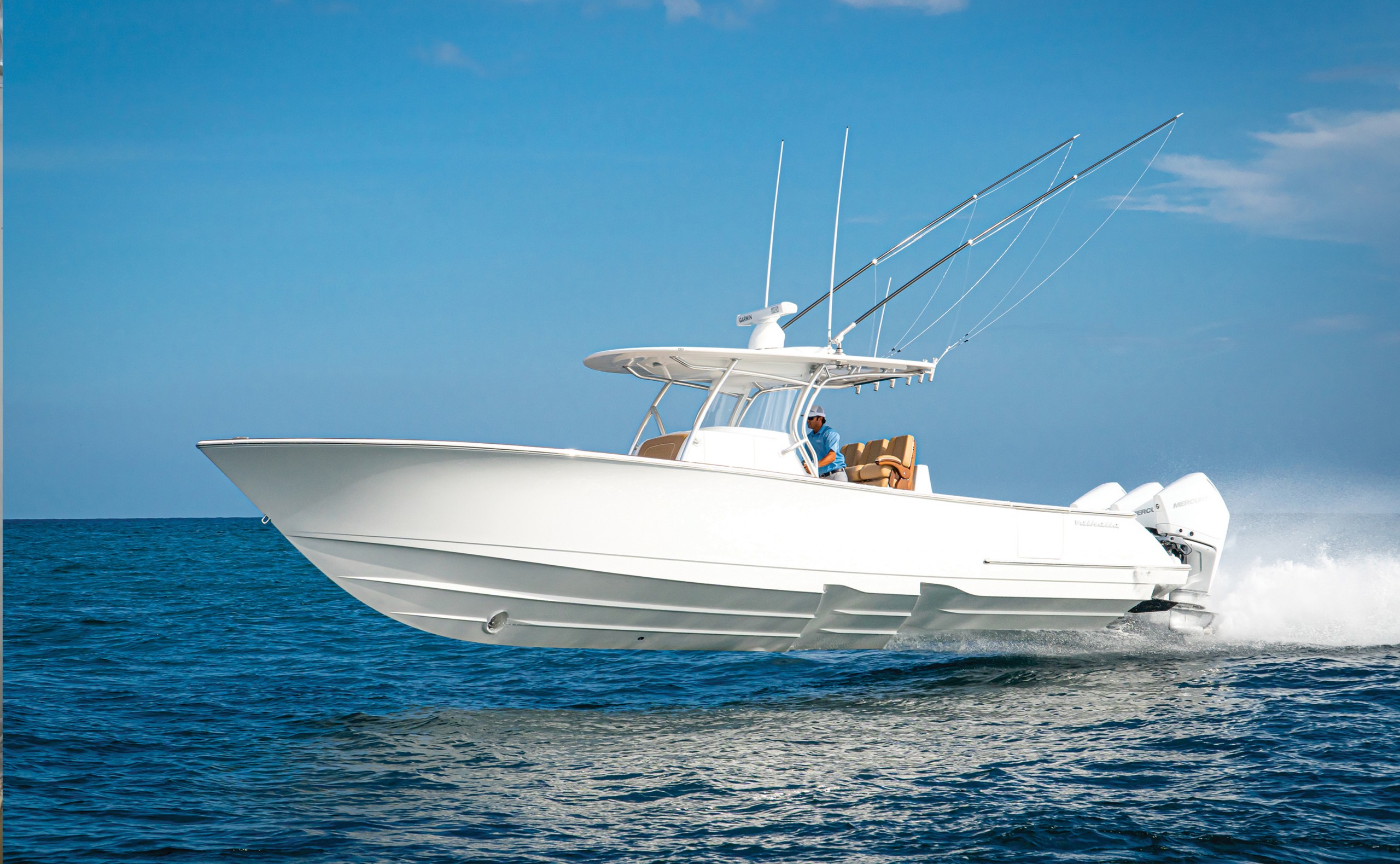
The future is likely to bring even more intuitiveness and simplicity to the boat systems of today. Photo courtesy Valhalla Boatworks
Transducers that See Underwater (and into the Future)
The AIRMAR Technology Corporation makes the transducers that make it possible for many of your favorite fishfinders and bottom machines to work. While youll likely never see an AIRMAR product on the console, there a better chance than not that your boat has an AIRMAR product or two”and youre better off for it. Given the integral role of AIRMAR transducers to the boating industry, an article about the future that did not include their perspective would be incomplete. Thankfully Craig Cushman, AIRMAR Director of Marketing was there for us. Cushman sees many of the same trends ahead in the marine electronics space. In regards to the forward-looking transducer, it not a matter of if it can be done, it how. The main question is how to affix it to the vessel. Weve been working with a company called Far Sounder out of Rhode Island. They offer the Argos System, Cushman says. We have been a provider of forward lookers to the cruise ship industry and large commuter vessels. We are bringing the technology down. Far Sounder introduced the Argos 350 for vessels in the 50 to 100 foot range. Most of these boats are of the trawler configuration, their hulls are more conducive to affixing the transducers. For the sportfish market, it difficult to transfix the forward lookers to the hull, given their shape. AIRMAR provides the technology to companies to make this happen. Right now it a matter of waiting for vessels to be designed to enable that ability. AIRMAR is also hard at work on the trends of technology scaling from other sectors. At the big picture level, there are a number of technologies at the high end”in the commercial fishing space that the recreational fishing market would love to have. Right now they are very expensive and we have to bring the price down. We are considering new technologies and looking for ways to do that. CHIRP was a similar process”it was in the commercial fishing sector for years before it was price appropriate for the recreational fishing market, Cushman says. The Far Sounder is along the same lines.
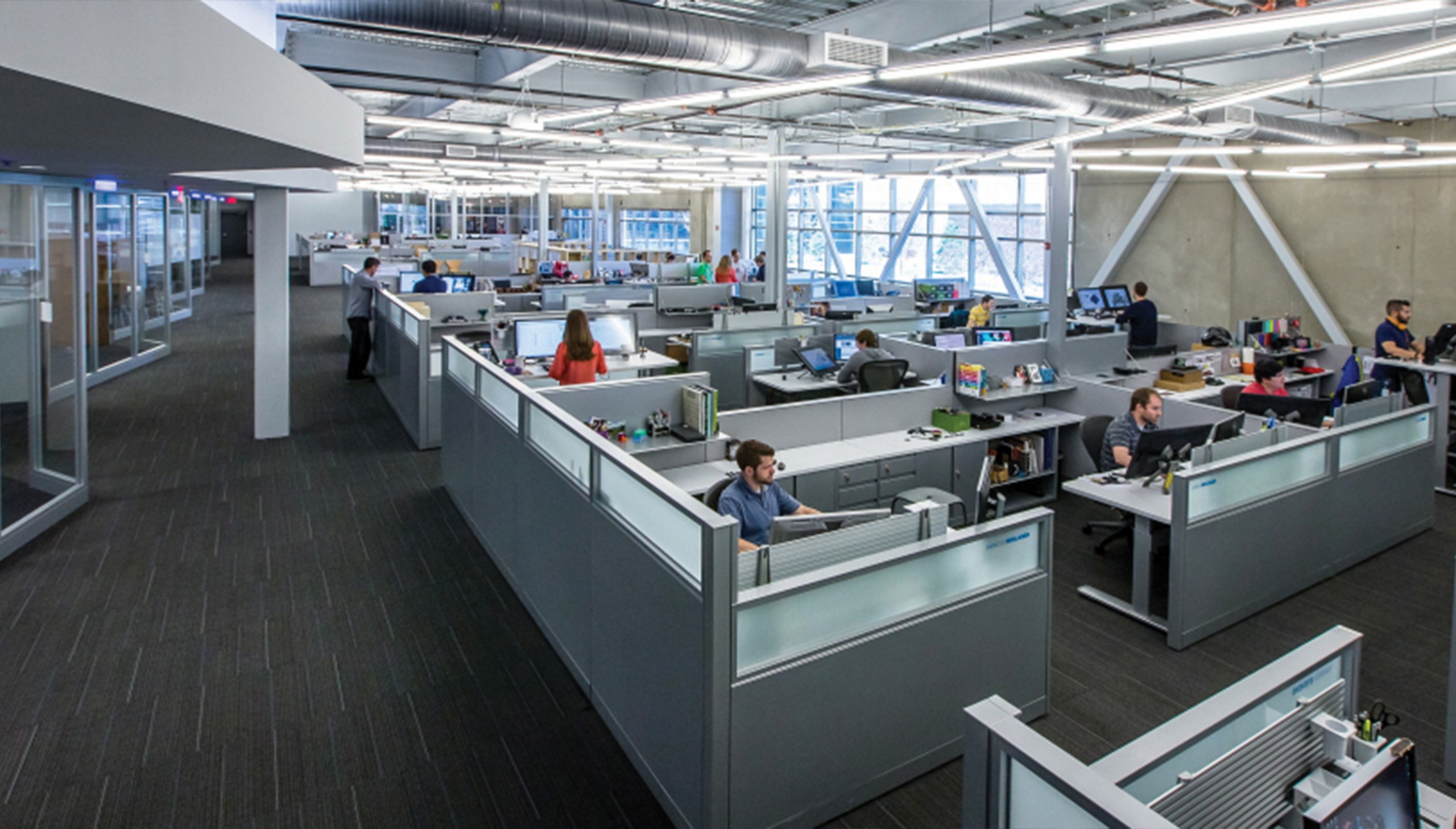
The Garmin research team offices may not look too exciting, but the products they make sure are. Photo courtesy Garmin
Viking Yachts: Predicting the Future and Guiding its Course
Given the size and influence of Viking Yachts, the company casts a large footprint over the boating industry. With this scale comes not only intimate familiarity with where things sit now, but also the ability to actively influence how the future unfolds. There is perhaps no person with more singular influence on the trajectory of the sportfishing boat market than Viking CEO Pat Healey. The last ten years have been awesome. A while back some writers asked me what was next. The answer then was big boats, mezzanines, Seakeepers and the like. There has been so much innovation and component development in the last ten years”you can control boat systems from your phone or I-pad, you can steer your boat from a watch. It incredible. In doing all of this, weve incorporated all kinds of complexity to make the systems work. All of that takes a lot of engineering, Healey explains. Taking all of these systems and integrating simplicity is the next step. In the last ten years weve added complexity, next well look at simplicity. Along with rapid advancement in boat systems, the last ten years have witnessed evolution in material technology and applications used in manufacturing boats. Healey sees the next ten years as an evening out period within this realm, too. Weve seen advancement in materials as well”carbon fiber and infusion. It was ten years ago that hull infusion started. The next ten years will bring affordability to these systems and processes. It will bring the price down. As prices for materials and input processes decrease, it will not only affect the purchase price of the boat. Harnessing the cost of systems and materials will harness the insurance costs as well, Healey explains. Our focus is on building what we build now”building it better, making it more simple and more economically.
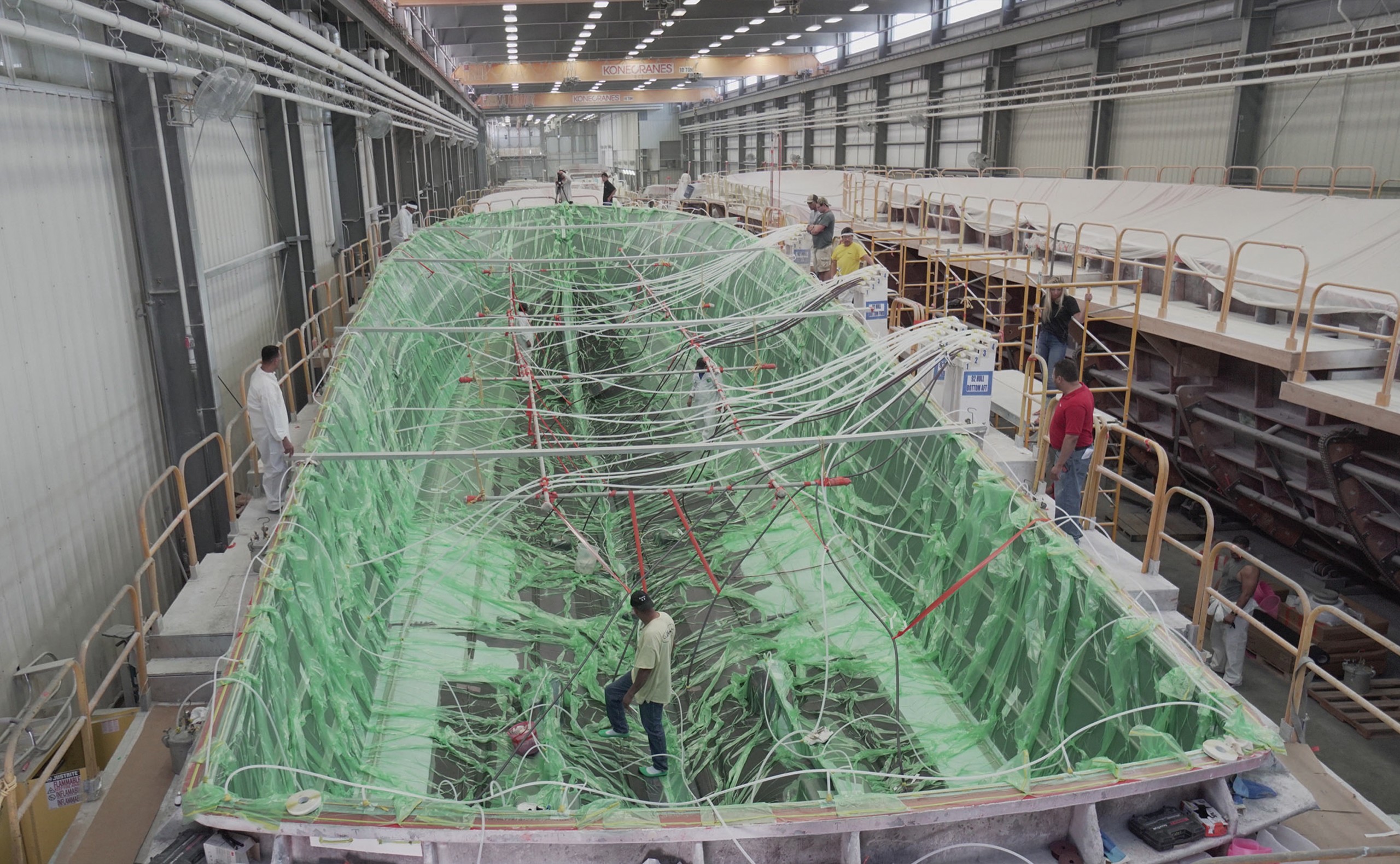
From the hull to the tower, the 92 Viking is full of innovation. Here is the infusion process. Photo courtesy Viking









